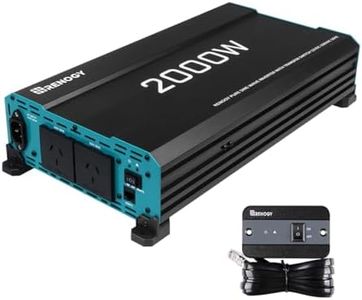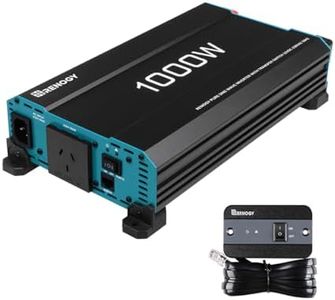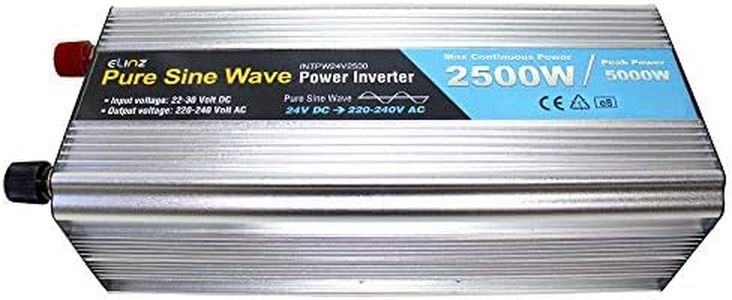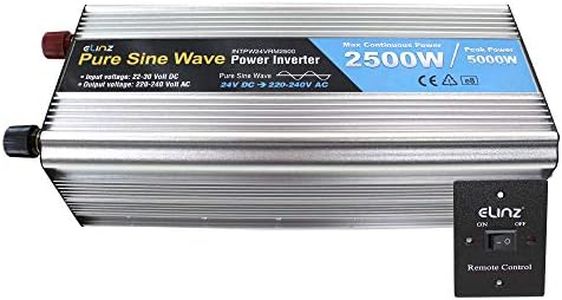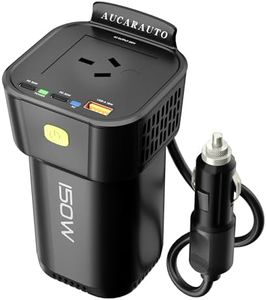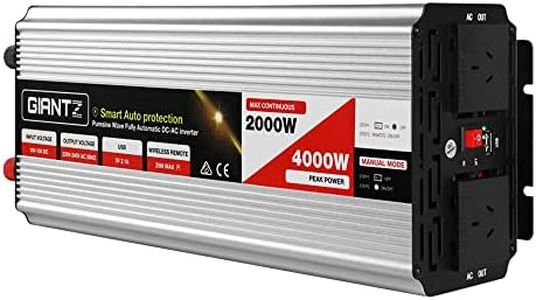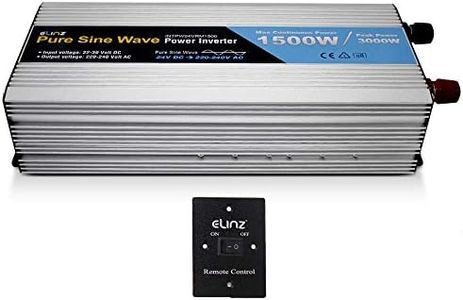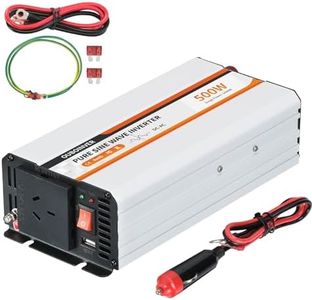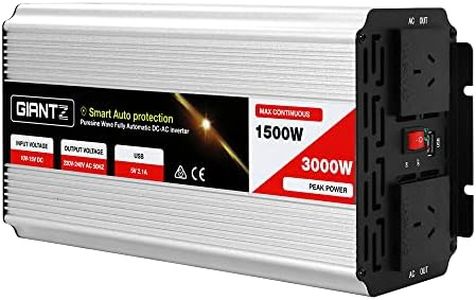We Use CookiesWe use cookies to enhance the security, performance,
functionality and for analytical and promotional activities. By continuing to browse this site you
are agreeing to our privacy policy
10 Best Car Power Inverters
From leading brands and best sellers available on the web.Buying Guide for the Best Car Power Inverters
When choosing a car power inverter, it’s important to start by knowing what devices or appliances you plan to use in your vehicle. Power inverters are the bridge that converts your car’s battery DC power into AC power, allowing you to plug in and use standard household devices on the road. Picking the right inverter ensures your electronics work safely and efficiently, without damaging them or your car’s electrical system. Focus on understanding major specifications, as well as your own usage needs, to make a wise and satisfying purchase.Wattage (Power Output)Wattage is the maximum amount of power the inverter can deliver at once. This is one of the most crucial specs because it determines what appliances or devices you can operate. Small inverters (up to 150 watts) are best for charging phones, tablets, or laptops. Mid-range inverters (150-500 watts) can handle bigger devices like small fans, game consoles, or camera charges. High-capacity inverters (over 500 watts) are suitable for things like mini-fridges or power tools. Figure out what you'll want to run at the same time, add up their wattages, and make sure to leave a bit of headroom for safety. Picking an inverter that's too weak means it could shut down or even get damaged, while one that's much bigger than your needs could draw too much power from your vehicle.
Waveform Type (Pure Sine vs. Modified Sine)The waveform refers to how closely the power output from the inverter matches standard home electricity. Pure sine wave inverters provide clean, smooth power that’s safe for all electronics, including sensitive devices like medical equipment or newer laptops. Modified sine wave inverters offer a simpler, less expensive form of power that’s fine for many basic devices but might not work well (or could cause damage or noise) with complex electronics or certain appliances. Choose pure sine wave if you’re running sensitive or valuable devices, otherwise, a modified sine wave version could be sufficient for simple items like chargers and lights.
Number and Type of Output PortsThis spec tells you how many devices you can plug in at once, and the kinds of connections available (such as AC outlets, USB ports, or even dedicated sockets for specific devices). More ports allow for simultaneous charging or use, which can be valuable if you have multiple users in the car. Think about your likely scenarios—do you just need to keep a phone and tablet charged, or are you looking to power a laptop, a fan, and other gadgets at the same time? Pick an inverter with enough of the right kind of outputs to match your routine.
Input Connection (Cigarette Lighter vs. Direct Battery)This refers to how the inverter connects to your car. Some plug into the 12V cigarette lighter socket, while others connect directly to your car battery with alligator clips. Lighter socket models are super convenient and quick to set up, but they’re usually limited to lower wattages (often under 150W or 180W). Direct-battery inverters can provide a lot more power, which is needed for high-wattage devices, but they require a bit more effort to connect and are better suited for longer or more demanding uses. Choose based on the power needs of your intended devices and your willingness to set up the inverter.
Safety FeaturesSafety features like overload protection, short circuit protection, over-temperature shutdown, and low battery alarm are there to protect both your devices and your vehicle. These systems automatically shut off or warn you if something is wrong, preventing accidents or damage. Especially if you plan to leave the inverter running for long periods or use it with valuable equipment, look for strong safety options to minimize risk.
Size and PortabilityThis refers to the physical bulk and weight of the inverter. A larger, heavier unit may deliver more power and have more ports, but could be awkward to move around or store in your car. Compact inverters are more portable and easier to set up quickly, which can be handy for road trips or short-term use. Think about where you’ll keep the inverter, how often you’ll need to move it, and how much space you have available in your car.
Cooling System (Fans or Passive Cooling)Inverters generate heat when in use, and this spec deals with how they dissipate it to stay safe and efficient. Some use built-in fans to stay cool, while others rely on having a larger body to passively cool (without moving parts). Active cooling (fans) is better for higher-wattage or continuous use, but may produce some noise. Passive systems are silent but may overheating if pushed too hard. Consider how long and how intensely you'll use the inverter: for heavy, continuous loads, an inverter with a fan is preferable.
